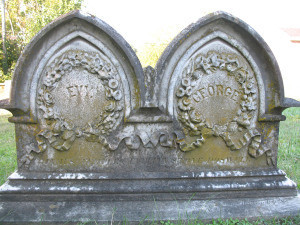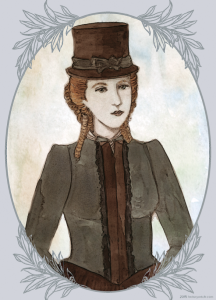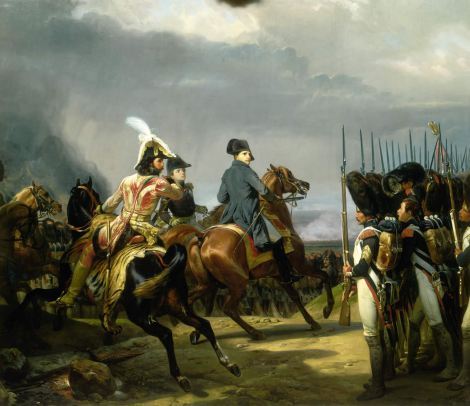Lenora Rogers's Blog, page 156
July 12, 2015
Taking Orlok to the Ultimate
 Originally posted on Vampire Syndrome Blog:
Originally posted on Vampire Syndrome Blog:
Most of you are at least a little familiar with Count Orlok, the vampire in the 1922 film “Nosferatu”, which forever changed the face of cinema. The story itself may have been an unauthorized version of Bram Stoker’s 1897 novel “Dracula”, but “Nosferatu” revolutionized the visual art of cinema. The now-classic “burn-up-in-sunlight” trope started with this film. Count Orlok’s sun-ray immolation is just one of the great, ground-breaking visual effects...
The story itself may have been an unauthorized version of Bram Stoker’s 1897 novel “Dracula”, but “Nosferatu” revolutionized the visual art of cinema. The now-classic “burn-up-in-sunlight” trope started with this film. Count Orlok’s sun-ray immolation is just one of the great, ground-breaking visual effects...
July 11, 2015
A Peek Inside the Libraries of Famous Writers
 Originally posted on Flavorwire:
Originally posted on Flavorwire:
There’s nothing like a well-stocked library to enhance a home. Especially when that library has been outfitted with books chosen by some of the choosiest readers of all — the authors themselves. We recently caught a peek at the literary collections of a few contemporary novelists in Leah Price’s excellent and newly released Unpacking My Library: Writers and Their Books, but we admit that our library-lust wasn’t quite sated, and we had to go hunting for more....
Souvenir Battlefield Photos – 1887
 Originally posted on Mysteries and Conundrums:
Originally posted on Mysteries and Conundrums:
From Eric Mink:
As described in a prior post (found here), a large group of Massachusetts veterans traveled to the Fredericksburg area in May 1887. Their visit to the local battlefields wrapped up a weeklong trip to Virginia that started in Norfolk, took them to Petersburg and Richmond, before arriving in Fredericksburg.
Among the party were two photographers. William H. Tipton, the famed photographer of the battlefield at Gettysburg is highlig...
Forgotten in Plain Sight: The City Cemetery at the Head of Amelia Street
 Originally posted on Mysteries and Conundrums:
Originally posted on Mysteries and Conundrums:
From John Hennessy [We offer this up in advance of Friday night’s History at Sunset program in the city and Confederate cemeteries in Fredericksburg. This post originally appeared in the Free Lance-Star in 2010.]
 The headstone of Evy and George Doswell, young victims of the 1861 Scarlet Fever epidemic in Fredericksburg.
The headstone of Evy and George Doswell, young victims of the 1861 Scarlet Fever epidemic in Fredericksburg.
Few things of such permanence in Fredericksburg came to be so quickly. On the night of January 3, 1844, as the town of 4,000...
Marc Bloch on Thaumaturgy
 Originally posted on A R T LR K:
Originally posted on A R T LR K:
 On the 6th of July 1886, French Jewish historian Marc L. B. Bloch was born in Lyon, France. Known as the cofounder of the Annales School of French social history, Bloch is considered a quintessential modernist. Born into an academic Alsacian family, he studied in Berlin and Leipzig, fought in the trenches of the Western Front for four years and became a lecturer in medieval history at Strasbourg University in 1919. This was followed by a post as professor of...
On the 6th of July 1886, French Jewish historian Marc L. B. Bloch was born in Lyon, France. Known as the cofounder of the Annales School of French social history, Bloch is considered a quintessential modernist. Born into an academic Alsacian family, he studied in Berlin and Leipzig, fought in the trenches of the Western Front for four years and became a lecturer in medieval history at Strasbourg University in 1919. This was followed by a post as professor of...
Barnes & Noble, Dead Nooks, and Brave New Branding
 Originally posted on Kristen Lamb's Blog:
Originally posted on Kristen Lamb's Blog:
The big news in publishing this week is Barnes & Noble’s plan to ax the Nook. After losing over a billion dollars trying to make the Nook a contender, it seems B&N’s new CEO is ready to just cut bait. According to Michael Kozlowski over at Good E Reader:
The NOOK segment (including digital content, devices and accessories) had revenues of $52 million for the 4th quarter and $264 million for the full year, decreasing 39.8% for the quarter and 47.8% f...
July 10, 2015
Little Miss Why
 Originally posted on History Witch:
Originally posted on History Witch:
This month, I’ll be featuring Queen Victoria’s children (mostly her daughters).
Princess Louise, Duchess of Argyll, was the fourth daughter and sixth child of Queen Victoria and Prince Albert. She defied the role of “princess” a bit by becoming an artist, sculptor and architect.
She was born at Buckingham palace in 1848 and spent most of her childhood hopping around the palace as well as Windsor Castle and Balmoral Castle. Rough. Her family called her “Li...
1865 July 1: 200 Lives Lost as Steamer “Kentucky” Sinks
 Originally posted on The Civil War and Northwest Wisconsin:
Originally posted on The Civil War and Northwest Wisconsin:
This article on the Kentucky disaster comes from The Prescott Journal of July 1, 1865. On the evening of June 9, 1865, the steamer Kentucky left Shreveport bound for New Orleans with 800 passengers, baggage, provisions, and 250 horses. Most of the passengers were Confederate prisoners who had been paroled two days earlier and were headed home. Two hours into her voyage, the boat struck one of the partially submerged logs that made t...
5 July 1940: Mystery Aircraft Landing in Malta
 Originally posted on Malta: War Diary:
Originally posted on Malta: War Diary:
Malta – World War 2. First visit to maltagc70? CLICK HERE Map of Malta
Get daily updates direct to your computer – sign up to follow maltagc70 (see R)
FRENCH AIR CREW ASK TO JOIN RAF
Hal Far and Kalafrana air bases were on red alert this evening after early warning systems spotted a single aircraft heading towards Malta’s south coast. The plane approached a just before 10pm, showing full lights which suggested it was not on an enemy raider on a stealth...
July 6, 2015
A brief history of Napoleon in eight blogs! No.4 The Napoleonic Art of War.
 Originally posted on If It Happened Yesterday, It's History:
Originally posted on If It Happened Yesterday, It's History:
To outline properly the scope of Napoleon’s military tactics we would need more than a limited understanding of military history. My aim here is to only briefly outline many of the innovations, tactics or methods that made Napoleon one the greatest military minds in the history of warfare. In saying this a lot can be made of Napoleon’s success and failure in battle. He was passionate and daring to the end, he won and lost his fair...






